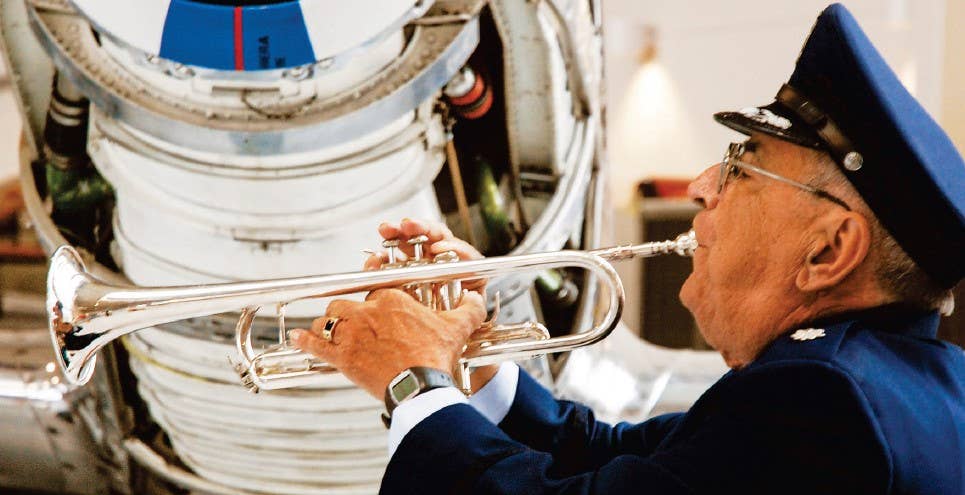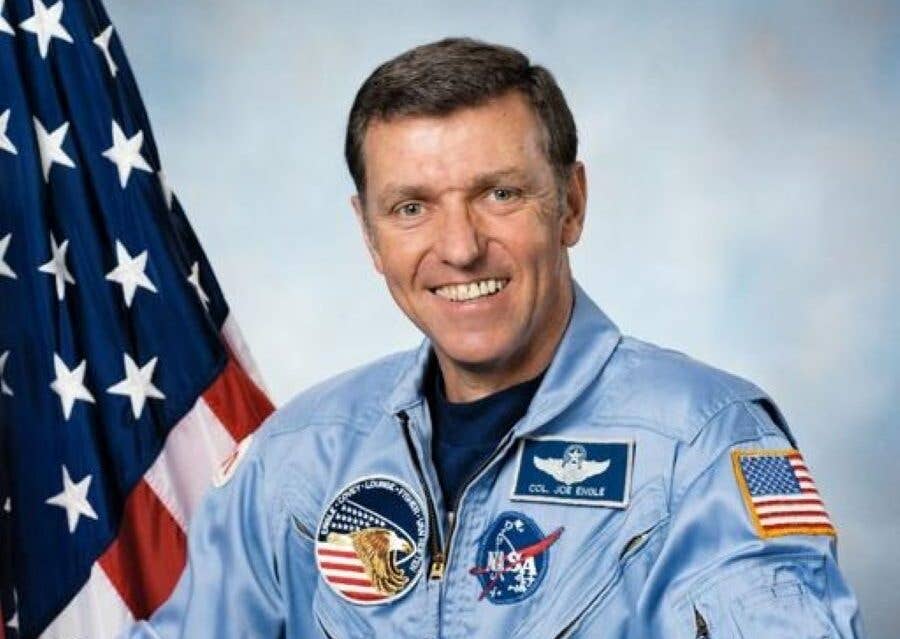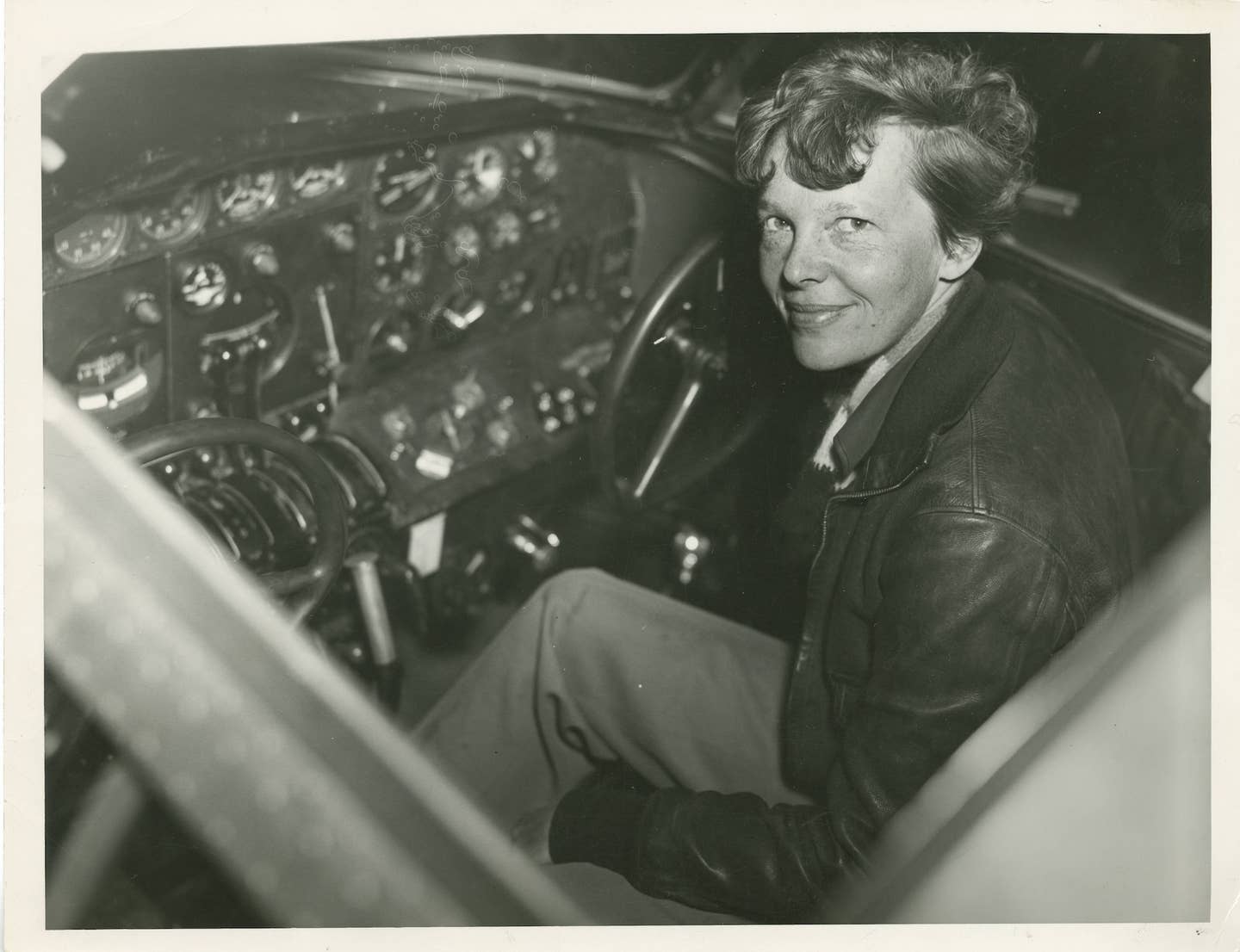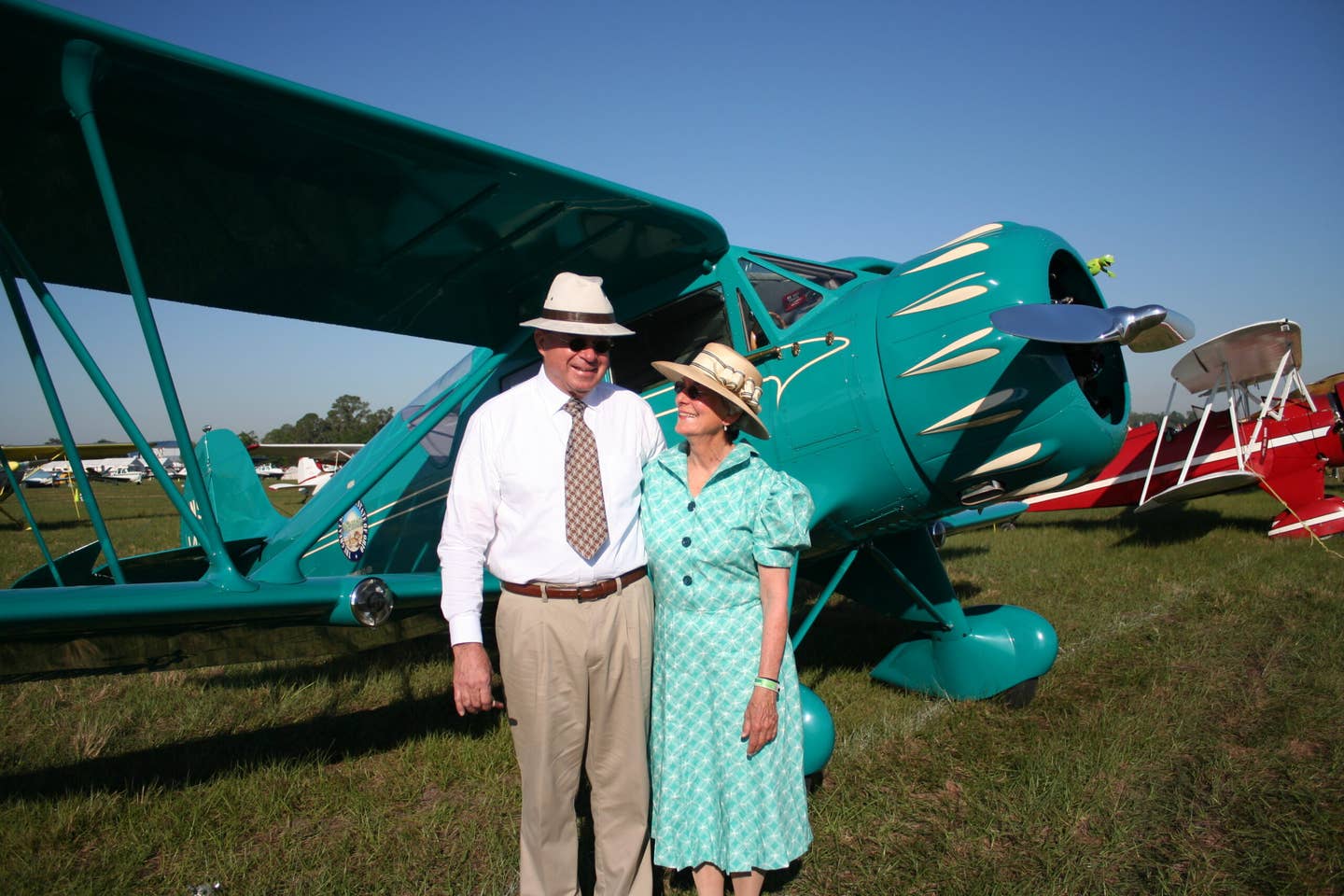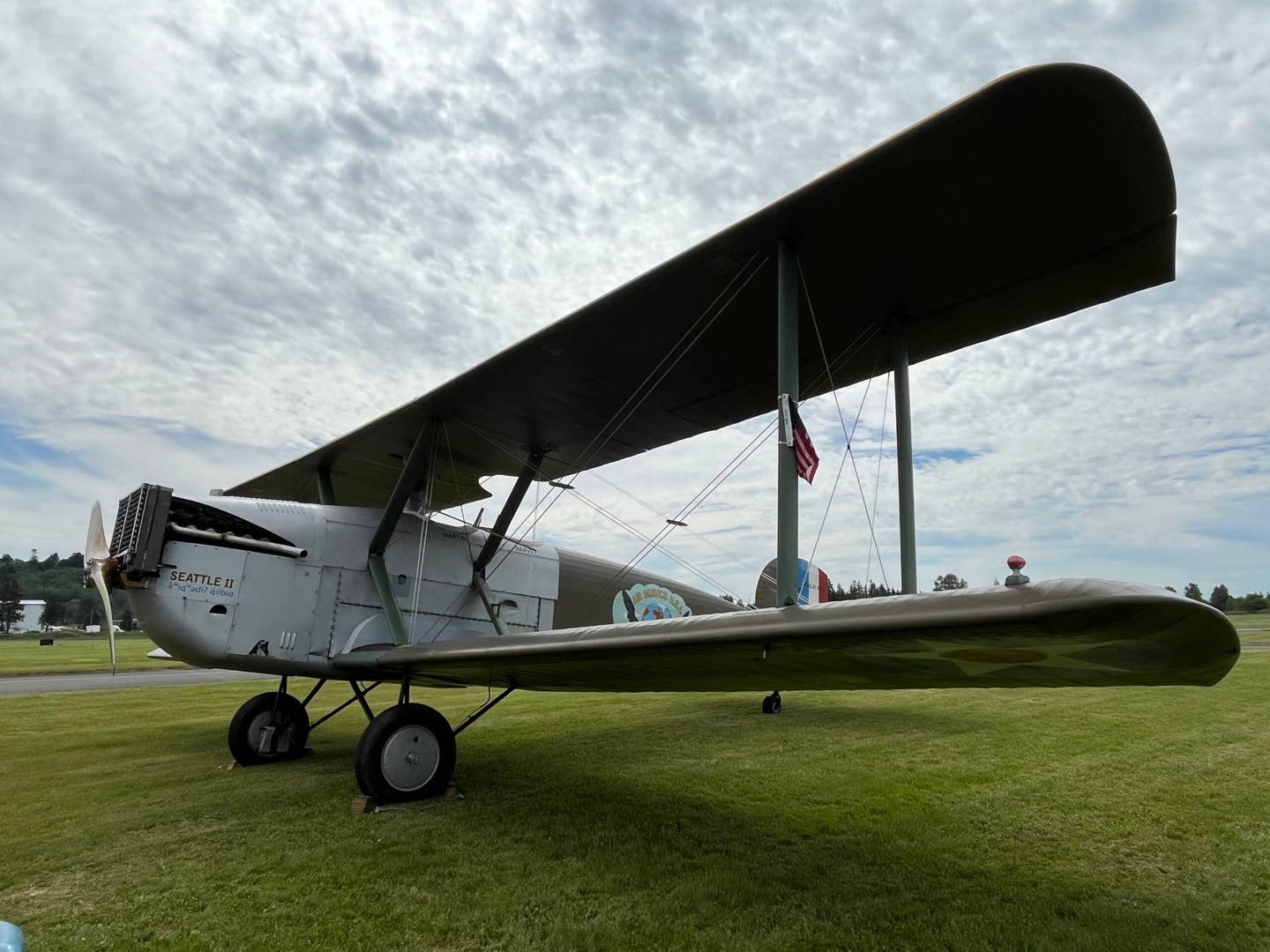Devotion Is Worth Watching If You Haven’t Already—Or Even If You Have
Aerial coordinator discusses film’s many treats for pilots and aviation fans.
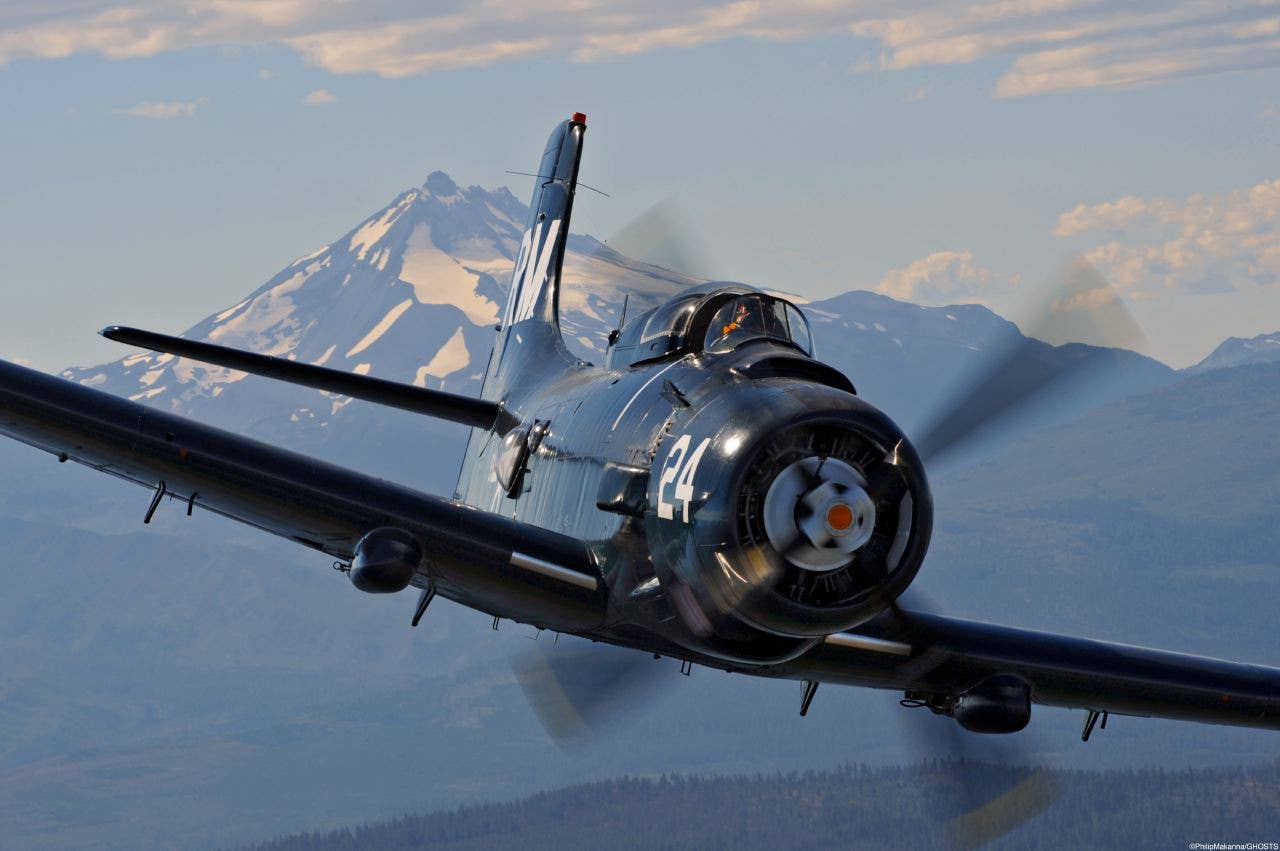
This rare Douglas AD-4W Skyraider from the Erickson Aircraft Collection plays a key role in Devotion. [Courtesy: Erickson Aircraft Collection}
If you have not gotten around to seeing Devotion, the naval aviation film set during the Korean War, you should make a point of doing so. Maybe tonight. For airplane fans in particular, it could be the beginning of a serial viewing habit.
Besides, don’t you want to be prepared when your hangar neighbors and other airport friends start debating over the best aviation movies ever made? Failing to catch this feature would be like entering a discussion of aviation literature without having read Fate Is The Hunter.
There are a number of reasons it took me a long time to see the movie, from the heating system failing at my local cinema the first time I tried to watch it, on a very cold evening, to the anticipated discomfort of watching a story that covers a difficult period in our nation’s history. And we already know how this one ends
Still, there are so many more good reasons to see the show than there are good excuses for missing it. It has strong acting and direction, wardrobe and makeup seemed spot-on, and there were enough interesting aircraft—real ones—on screen to keep planespotters very busy. Indeed, after speaking with the film’s aerial coordinator, Kevin LaRosa II, also known as K2, I realized Devotion is an event every aviation enthusiast should experience.
LaRosa is vice president of aerial film production for Helinet Aviation Services and has shot compelling airborne footage for a wide range of films from the low-altitude sweeps over Napa Valley vineyards in the comedy Wine Country to the most exciting air combat and ground attack sequences in Top Gun: Maverick. But he says he has particularly strong feelings about the work he and his colleagues performed for Devotion.
He is quick to point out that this film differs from Maverick in many ways. “The two films are apples and oranges, really,” he says. “Devotion is very gritty. It takes place during wartime and it's a true story. It pulls the viewer in.”
Then there are the airplanes. Like some of our favorite character actors, a squad of vintage iron—including a handful of Vought Corsairs, two Grumman F8F Bearcats, a Douglas Skyraider, and a MiG-15—make a huge contribution to the film’s authenticity. Their pilots, including Steve Hinton and John Maloney, who have vast experience in movie flying as well as Unlimited Class air racing, had no trouble getting close to the camera, LaRosa says.
“There are lots of big radial engines in your face,” he says. A few times they had to back off a bit, like while shooting the Skyraider’s front end in flight, giving that rare aircraft’s many fans a good look at its legendary Wright R-3350 Duplex Cyclone radial. “Whatever electrical energy that engine was generating would start to blow out the cameras if we flew too close,” he says.
The memorable footage came from a camera mounted on the tail of LaRosa’s Aero Vodochody L-39 CineJet. The jet got lots of action chasing warbirds while filming them at speed. For sweeping shots of fighters flying past, he filmed from a helicopter. The mix was fairly even between jet and chopper, with “a little bit of drone” here and there, LaRosa says.
The film uses CGI when necessary, such as when director J.D. Dillard needed to show a flight of Skyraders but had just one real aircraft on hand. “But the closeups are real airplanes,” LaRosa says. “J.D. made great decisions on which scenes needed to use real aircraft.” So the Corsairs dog-fighting with the MiG? Those are real.
There was also some trickery, such as placing actors in the rear seat of a Hawker Sea Fury to enhance the impression that they are actually flying their fighters. Too bad we don’t get to see the rest of that machine on screen.
Devotion is also about far more than airplanes. It delves into prejudice, complicated race relations, human relationships during war and peace, and the social norms of the mid-20th century America. The story begins in early 1950 when Lieutenant Thomas Hudner (Glen Powell) transfers to the Navy’s VF-32 squadron, which is training at Quonset Point Naval Air Station in Rhode Island. The squadron commander pairs him with Ensign Jesse Brown (Jonathan Majors), the unit’s only African American pilot. They begin a long, sometimes difficult process of building a professional and personal relationship.
The film’s intimacy makes it more than an aviation extravaganza. The camera brings the audience very close most of the time, whether the scene involves a heart-to-heart conversation between Jesse and his wife, Daisy, or Jesse and Tom in the squadron locker room, or pilots running their hands slowly across the fabric-covered control surfaces of their aircraft during a preflight walk-around.
We find that the characters in this undertold story often are as compelling as the airplanes they fly. Even the Skyraider’s giant 3350 does not eclipse their performances.
This may be a busy time of year, but try to make room in your schedule for this one.

Subscribe to Our Newsletter
Get the latest FLYING stories delivered directly to your inbox

